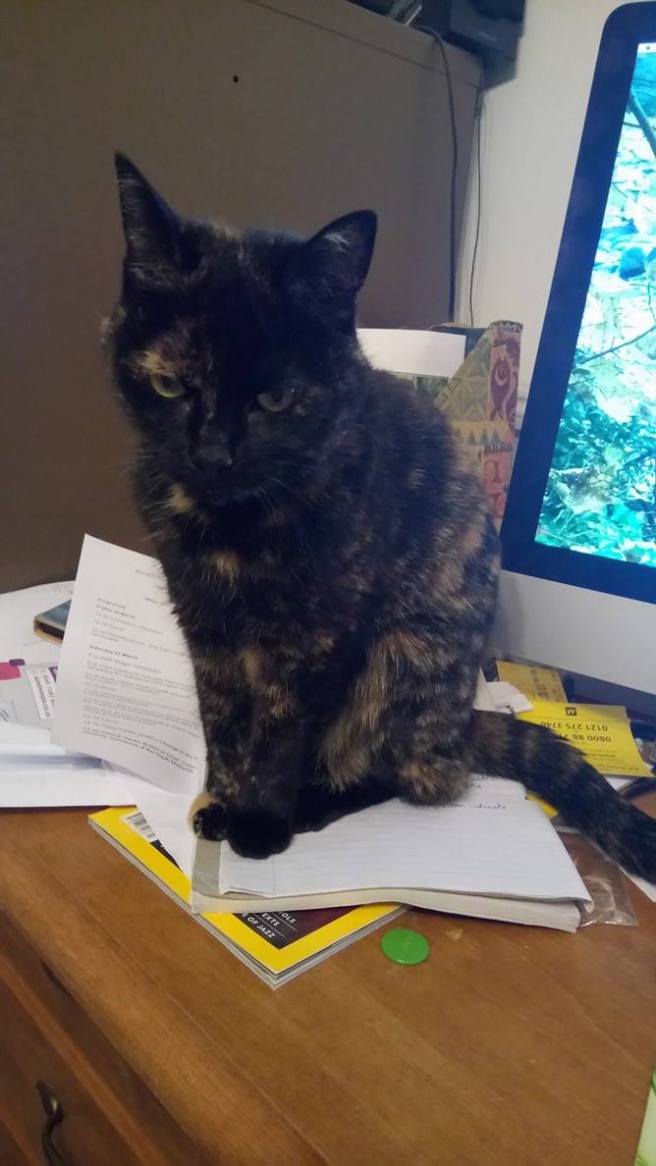Guess who missed a day yesterday?
Ah well, back to it!
After the break, in which just about everybody ran off to the free coffee I mentioned last time (not me though, I don’t do coffee), we settled back down again. I am sad to say that these next three talks, which were between that break and lunchtime, are when that lack of stimulant started to get to me, and my notes are paltry at best. I really am very sorry about that. Hopefully typing them out will jog my memory: i found that happened in the last blog! And, as also happened in the last blog, I’ll probably go off on tangents based on what I found most interesting in the talks …
Place naming within Anglo-Saxon Estates in Oxfordshires and Beyond by Simon Draper
This looked at the “great estates”, otherwise known as multiple states, found in the Middle Anglo-Saxon period, specifically for this talk in the 850s. These were large areas of land owned by one centrally placed power, with lots of dependent struts dotted around. These were often owned by royalty.
They often contained the following category of place-name. These examples come from the presentation and are from one estate in Oxfordshire. Did I write down where it was? Of course not.
Functional names: Cowage, Hardwick. These contain the element -wic. The Key of English Place-Names defines this name as often meaning “herd-farm”. So, names which show the function they had.
Directional name: Easton, Sutton, Middleton. (East, South and Middle respectively, plus the last element -tun. Sounds like how Geordies say “town” and does pretty much mean town\village\settlement) These were named, of course, for where they were in relation to the central ruling bit.
Defensive names: Warborough. According to my dictionary of British Place-Names, this is composed of the two elements weard and beorg. If you squint for a while at it and think “defensive name?” you might be able to guess that it means guard or sentinel.
It’s not where we get “guard” from, though, sorry, that’s misleading of me, we got guard from French. Hence why “gu-” which is exceedingly not English-looking. They do come from the same Proto-Germanic root though, I’m pretty sure. OFF TRACK. I AM VERY OFF TRACK.
Ok, so beorg is a name given to a very specific rounded shape of hill. Here are some good examples! So, combined, they mean “watch” + “hill”.
Names of dependent farms: Barton, Berwick, Stoke. Stoke comes from the word stoc, which according to five minutes Googling could literally mean “settlement dependent on a larger settlement”. In the presentation Simon hypothesised that this name was specifically given to places which produced/made something of value to the larger estate.
Status names: Simon gives two examples here of names from which we can possibly deduce the status of their inhabitants:
Burton: gebura + -tun
Netton (or Nettan, help, I ca’t read my own handwriting?!) geneata + -tun.
Both of those first elements apparently mean “peasant”, though when I had a hunt through Bosworth and Toller it definitely looked like the two words weren’t interchangeable and I’d say geneata seemed slightly higher status? But anyway, that’s sheer speculation.
Place-names and the evolution of administrative geography on the Chiltern dip slope by John Baker.
I really can’t piece my notes together too well on this, which is completely rubbish and useless because I remember maps and arrows and an exciting sense of place-name detective work. But let’s make the best of it anyway. There is every chance that I will actually misrepresent stuff here, so … take this with a handful of salt.
So. The place-name being questioned was the Domesday Hundred called Daneis. (Remind me to cover Anglo-Saxon hundreds some time)
This looked like the Old French word “Daneis”, which meant “Danish”. While the etymology looked fairly simple, it didn’t make sense in a wider context. Why would an Anglo-Saxon administrative area be called by a French name, especially when there were no other Norse names in the area and little evidence of Norse settlement either? Old French hundred names are extremely rare. So are hundreds that aren’t named after either their main manor or their meeting point. And an ethnic label which wasn’t part of some sort of compound (like “Dane’s town/Dane’s hill” for two made-up examples), but existed on its own? Even rarer. You get the point.
So John proposed an alternative origin, in which it wasn’t French, but Middle or Old English: Danes oak/Denes ac, meaning “Dane’s oak”. If I remember rightly there was actually an oak around that area? Could be making that up. Meeting points (which remember are what most hundreds were named after) are often named after landmarks. They were also often found on long routes near an abrupt directional change. You can imagine “big oak tree after the first left turn” to be a good travel instruction.
The other interesting thing about the Daneis hundred is that it was actually split up into several pieces by the St Albans Hundred. This was why the hundred meeting point of Daneis wasn’t where it looked like it should be – near a sharp bend on a long road – but was instead held at a place named … well, I can’t read my handwriting here. It looks like it should say Sedgeham Ash. Who knows?
*heads off for a Google* GOOGLE IS MY SAVIOUR Ok, it’s probably Segeham Ash.
Anyway, the point of this new hundred was that it was the first point which people travelling from the newly separated areas of Daneis (separated by St Albans, remember), could easily reach. So they made a new meeting point there.
So through place-names studies John theorised how a whole area had been affected by the sudden change in administration caused by the expansion of the St Albans Hundred.
And with that I shall retire to bed, as my cat is impatient for her pillow:



3 thoughts on “Conference part 2”